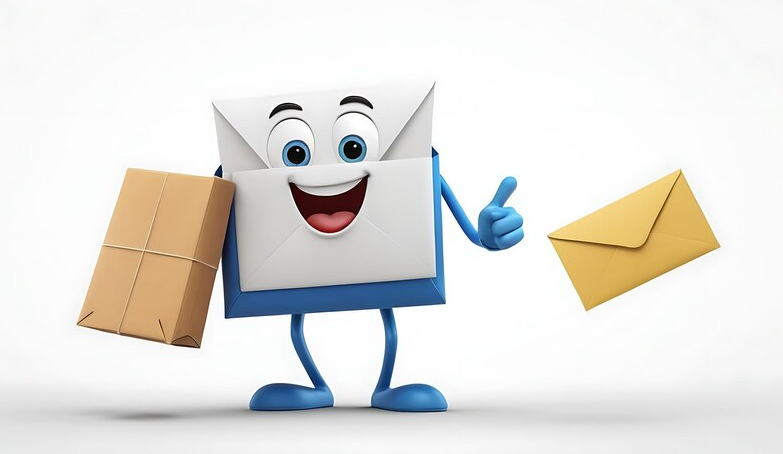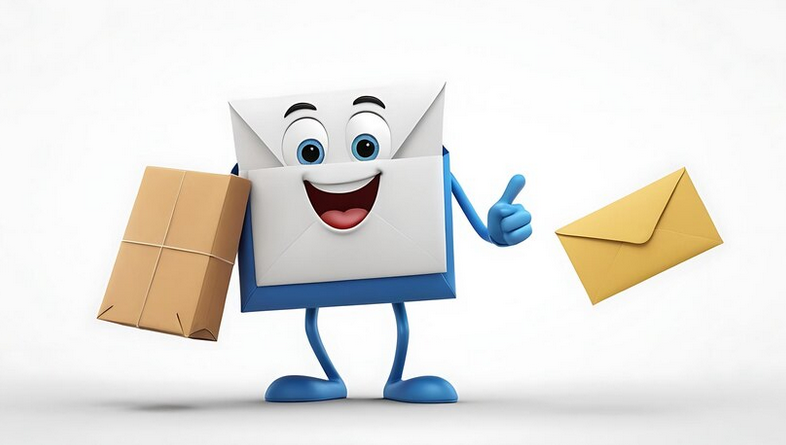How to bring inactive subscribers back to life? This is the question that came to my mind one day when my mailing list was stuck like a dead weight. I've learned a few strategies that not only spark interest, but help create a real connection. Ready to learn how to win back your readers?

Glossary
📧 Email Marketing – using email to promote goods or services, usually for the purpose of informing and attracting customers.
🔄 Inactive subscriber – a subscriber who is not opened or did not interact with mailings for a certain period of time (usually 3-6 months).
📊 Engagement Rate, ER ) – the percentage of subscribers who actively interact with content (opens, clicks, etc.) compared to the total number of subscribers.
🚦 Segmentation - the process of dividing a list of subscribers into groups according to certain criteria to personalize content.
💌 Revitalizing campaign – special mailings designed to intervene and activate inactive subscribers with offers, promotions or surveys.
🔍 Data Analysis – studying statistics and trends interactions to identify inactive subscribers and determine appropriate measures to win them back.
📨 Retargeting – re-appealing to subscribers with the goal of regaining their attention using personalized offers or reminders.
📆 Mailing schedule – schedule for sending emails , which meets the interests and needs of subscribers.
❓ Poll – a tool for collecting the opinions of subscribers about the content of the newsletter, allowing you to better understand their preferences and motivation.
🛑 Unsubscribe – the process in which a subscriber decides to stop receiving mailings, which may be due to lack of interest or inappropriate content.
⚙️ A/B testing – method Comparing two versions of the same email to see which is more effective in achieving desired metrics (such as open rates or clicks).
🎯 Target groups – specific audience segments, which marketing efforts are aimed at in order to increase engagement and conversion.
How to get back inactive email subscribers
When I first encountered the problem of inactive subscribers, a burning question was brewing in me: “How did this happen?” At first there was just surprise, then slight panic. I remember the moment when I decided to check my base. It turned out that almost 40% of subscribers did not open letters for more than three months! But it was too bad to lose them. Emotions were boiling and a desire arose inside to figure out what I was doing wrong.

The problem with inactive subscribers, like any other, has its reasons. An overabundance of information in inboxes, lack of relevance of content, and even simple loss of interest are just the tip of the iceberg. I also had a suspicion that most of them simply did not notice my letters. It felt like their inbox was wandering whimsically in search of much-needed messages, as if their own dreams were wandering among a sea of sealed envelopes. And so the idea was born: to get them back with personalized emails!
First, I started segmenting my subscriber base. I personally chose the category: those who signed up more than six months ago and were ranked below three stars. This process turned out to be a real discovery. I remember analyzing each component: which letters were ignored, which proposals turned out to be useless. Something inside me told me: “Okay, we need to move on!” And I created a whole series of letters that included the most interesting and relevant topics for them, because, in fact, subscribers craved an individual approach.
Why is it important to track the number of inactive subscribers
Why is inactive subscribers important to the existence of your business? Let's break down a few key aspects:
- 📉 Reputation Saving: Email providers can lower your sender reputation when their users ignore messages, resulting in them being classified as spam. After noticing this in others, I came to the conclusion that the best way to avoid problems is to keep your base clean.
- 💰 Reducing mailing costs: Each new letter is a cost. Ineffective mailings create additional costs, and now it’s time to ask the question: “Why pay for something that no one reads?”
- 🎯 Reducing subscriber churn: Bringing back an inactive subscriber is often cheaper than attracting a new one. Each subscriber turns into a unique phenomenon and the best solution is to return them.
Remember that active subscribers can become your main advocates. By creating unique offers for them, you can interest them again!
“It's not how many followers you have, but which ones stay with you that matter” - Guy Kawasaki, legendary marketer, one of the first Apple Computer employees. During the company's early years, he was the chief information technology evangelist and was responsible for marketing the Macintosh computer in 1984.
Thinking about inactive subscribers, I came to understanding that working with them is more than just sending letters. This is a real art that combines psychology, marketing and personal communication. And now, when I look at the conquered heights of returned subscribers, awareness of their value has become an integral part of my work.
How to return inactive subscribers to activity
| Step | Description |
|---|---|
| 1. | Database segmentation. Highlight inactive subscribers using a special rating. |
| 2. | Content personalization. Each layer of subscribers should receive what is truly interesting to them. |
| 3. | Testing. Try different subject lines and email styles to see what works. |
| 4. | Analysis of results. Study behavioral factors and continue to improve the approach. |
So, step by step, inactive subscribers return to my world again and Now I can say with confidence that each of them can become your faithful ally.
How to get back dissatisfied subscribers
Each of us For those involved in email marketing, there is this common problem - inactive subscribers. I encountered this phenomenon when one of my companies began to lose subscribers who had previously eagerly read our newsletters. It was like a frozen ocean—promising, but without movement or activity.

During one of the meetings with the team, the idea came up to conduct a reactivation campaign. We decided to send a series of emails with one main goal: to pique the interest of subscribers and bring them back to reading our content. At the first stage, it was important to understand why subscribers became inactive. We collected all possible data: from subscription sources to reactions to our past letters.
While observing the results, I noticed that many subscribers who stopped opening emails mostly came from one channel and signed up for the free content - the lead magnet. Over time, having received their reward, they simply lost interest. This became an auxiliary signal.
I see that such identification helps to achieve great results, because understanding the reasons is an important step towards correcting the situation. Subsequent letters became more interesting and even provocative. The first letter was neutral: “We missed you.”
The next letter already contained the question: “Why are you ignoring us?” — with a mention of possible updates and improvements to the content. With each new letter, the themes and content were adapted. Who would have thought that the next step could contain something similar to “Are you a fool or a fool?” — this letter caused a storm of emotions and curiosity.
🔍 Having discussed such approaches with colleagues, it became obvious that each person feels part of the team. By opening such emails, users begin to feel important. I know how important it is to feel that you are not just an email address, but part of an active community.
And, lo and behold! Statistics for the week showed that of those surveyed, 30% began interacting again. This inspired the team to work on improving future campaigns.
🗨️ As one famous marketer says:
"The ability to ask the right question is already half the battle." - Barry Schwartz, renowned SEO columnist and speaker, author and editor of leading industry media Search Engine Land and Search Engine Roundtable. He is also the founder and director of the company RustyBrick, which develops software for websites and mobile applications. Worked as a search consultant for Google, Yahoo Search, Bing, etc.
Here's how I did it, and here's what we used:
- First letter: Neutral question about how you are doing.
- Second letter: We found out the reason for inactivity through a survey.
- Third letter: A provocative topic that subscribers could not ignore.
And here's the result - people started opening emails again, started reading and interacting with the brand again, and this is what everyone strives for.
.gif)
Steps to implement your successful follower response:
| Step | Action |
|---|---|
| 1. | Segment the list to understand who became inactive and why. |
| 2. | Prepare three letters, starting with neutral topics and ending with provocative ones. |
| 3. | Chat with subscribers: ask questions , ask for their opinion. |
| 4. | Analyze results and adjust strategies. |
If you follow these simple guidelines, you'll be successful in getting your inactive subscribers back!
How to successfully reactivate inactive subscribers
In my In my experience in email marketing, I often came across the following question: “How to get back inactive subscribers?” One day I came across an amazing situation. We had thousands of subscribers on our mailing list, but most of them didn't open our emails. I wondered how I could bring them back to life, since they were still potential clients.

When the situation reached a critical point, I decided to take matters into my own hands. Essentially, we didn't just have a long list of addresses, but real people in whom time and effort were invested. After conducting an analysis, I found out that more than 60% of subscribers have not been active for more than six months. These were familiar faces who had once shown interest, but for some reason had lost sight of.
Segmentation and Personalization
The first thing I did was list segmentation. Creating a separate group for inactive subscribers allowed us to focus on them. I adapted the materials and prepared a series of letters that were more personal and resonated with their previous interests. So, one of the subscribers, Natalya, was interested in the topic of ecology. I prepared a custom letter on how our product contributes to sustainability and the environment. My method worked - Natalya not only opened the letter, but also wrote a review!
“I haven’t seen your brand for so long and thought you had closed. Now I’m interested again!” she wrote back to me.
Process automation
To automate the reactivation processes, I set up trigger chains. Each subscriber received a notification after two months of no activity. The settings were as follows: if the subscriber did not open three emails, he automatically moved to the last stage, where I offered him a unique offer. Address validation was also carried out - this saved us from unnecessary work with unavailable contacts. For example, the site the addressee was pointing to turned out to be unavailable and was automatically deleted.
Analysis of the results
The results were impressive. In the first campaign, we managed to bring 15% of inactive subscribers back to work. And this is not just a dead number - these are living people with real needs and desires. Each return was a real success for me, and I knew that we were on the right track.
Statistics show that reactivating inactive subscribers can lead to an increase in conversion rates of at least 20%. It is important to understand here that maintaining the cleanliness of the database is not a one-time event, it is an ongoing process. I've found that regular checks and campaigns increase engagement over the long haul.

What to do next?
Now it is important not to lose those whom we managed to return. I approached this by creating valuable content that people would care about. Every experience is an opportunity to learn and grow.
- ✉️ Prepare personalized newsletters.
- 🔄 Set up automation for reactivation campaigns.
- 📈 Conduct analysis after the first campaign to improve results.
There is some truth to the cliché “Every customer is a friend.” We can surprise them with interesting offers and bring them back to life. And yes, this is the prose of life - someone left and now has returned! And if I had not had this experience, I could have missed significant opportunities.
Summary of reactivation processes
| Steps | Actions | Results |
|---|---|---|
| Segmentation | Dividing the list into active and inactive | Understanding Needs |
| Personalization | Create custom emails | Increase open rate by 15% |
| Automation | Setting up triggers for reactivation | Returning inactive clients |
| Analysis | Campaign evaluation after 1-2 months | Optimizing future launches |
Key lesson - don't be indifferent to inactive subscribers. They can still be an important part of your success story!

Often asked questions on the topic: Inactive email subscriber
What is an inactive email subscriber?
An inactive email subscriber is a person who has signed up for your mailing list but does not open or interact with your emails for a period of time.
Why is it important to track the number of inactive subscribers?
Tracking inactive subscribers helps you understand your audience's engagement levels and adjust your marketing strategy to improve results.
How to get back inactive subscribers?
You can use custom follow-up campaigns, such as discount offers, interesting content, or personalized reminder emails.
What is the optimal email frequency to maintain engagement?
The optimal email frequency depends on your audience and content type, but generally 1-2 times a month is considered a reasonable choice.
What to do with subscribers who could not be returned?
It is recommended to clear your email list of such subscribers to maintain high sender reputation and campaign effectiveness.
What metrics are important to measure subscriber engagement?
It is important to track email open rates, link clicks, unsubscribe rates, and conversions.
How to effectively segment subscribers to increase engagement?
Segmentation can be based on subscriber behavior, preferences, or demographics, allowing you to send more relevant offers.
How often should you update your content to keep your subscribers interested?
Regular content updates, at least once a month, help maintain interest and motivate subscribers to stay active.
How to use A/B testing to get back inactive subscribers?
A/B testing allows you to test different elements of your email, such as headlines, images, and CTAs, to determine what works best for your audience.
What content is best for reviving inactive subscribers?
Special offers, exclusive content, or helpful tips show your subscribers that they signed up for your newsletter for a reason and may become interested in it again.
Thank you for reading and for becoming wiser! 🌟
I'm glad that you went through this exciting journey with me. The knowledge gained is your strong shield against losses in the world of email marketing. Using simple but effective strategies, I've been able to bring thousands of inactive subscribers back to life—that's real business results. Revitalizing customer interest requires creativity and understanding of their desires. 🌈 Don't miss the chance to use these techniques and feel the effect yourself. Ready to try? Write in the comments which of the proposed solutions you liked the most!

Article Target
Provide the reader with practical advice on how to win back inactive subscribers.
Target audience
Marketers, small business owners, email marketing specialists.
Hashtags
Save a link to this article
Leonid Vlasov
Copywriter ElbuzMy texts are a kaleidoscope of successful automation in the Internet space. Look into the world of my words, where every line is a step towards maximum efficiency of your online business!
Discussion of the topic – Inactive email subscriber?
Consider strategies and techniques to help re-engage inactive subscribers and increase engagement.
Latest comments
9 comments
Write a comment
Your email address will not be published. Required fields are checked *






















.png)




Emma
What if you developed a series of catchy short newsletters with humor? This can bring back the interest of subscribers! 😂
Thomas
I recently read about content personalization. By making emails more personal, they might be able to reach those who have tuned out. 🤔
Clara
How about conducting a survey among inactive subscribers to understand what topics interest them? This is a good way to make contact!
Леонид Власов
Creating surveys is a great way! However, do not forget about regular reminders of the value of your letters. It is important that subscribers know what they are missing out on. 📊
Giovanni
I would suggest organizing prize draws to stimulate interest. Who doesn't love gifts? 🎁
Hans
Honestly, I don’t see the point in wasting energy on inactive subscribers. Perhaps we should just weed them out? 🤷♂️
Sofia
But sometimes a drop in interest is associated with a change in needs. We can try to adapt! 💡
Natalia
I'm experimenting with headlines right now. I wonder how this will affect open rates!✨
Igor
All of these suggestions are good, but I think there is too much noise around email marketing. It is better to communicate directly with real clients. Why all this game? 😒